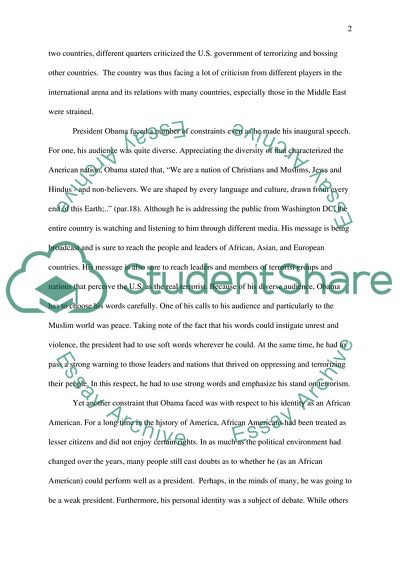Cite this document
(Identification and Constitutive Rhetoric in President Obamas 2009 Inaugural Speech Essay Example | Topics and Well Written Essays - 3250 words, n.d.)
Identification and Constitutive Rhetoric in President Obamas 2009 Inaugural Speech Essay Example | Topics and Well Written Essays - 3250 words. https://studentshare.org/politics/1829743-342-final-paper
Identification and Constitutive Rhetoric in President Obamas 2009 Inaugural Speech Essay Example | Topics and Well Written Essays - 3250 words. https://studentshare.org/politics/1829743-342-final-paper
(Identification and Constitutive Rhetoric in President Obamas 2009 Inaugural Speech Essay Example | Topics and Well Written Essays - 3250 Words)
Identification and Constitutive Rhetoric in President Obamas 2009 Inaugural Speech Essay Example | Topics and Well Written Essays - 3250 Words. https://studentshare.org/politics/1829743-342-final-paper.
Identification and Constitutive Rhetoric in President Obamas 2009 Inaugural Speech Essay Example | Topics and Well Written Essays - 3250 Words. https://studentshare.org/politics/1829743-342-final-paper.
“Identification and Constitutive Rhetoric in President Obamas 2009 Inaugural Speech Essay Example | Topics and Well Written Essays - 3250 Words”. https://studentshare.org/politics/1829743-342-final-paper.


